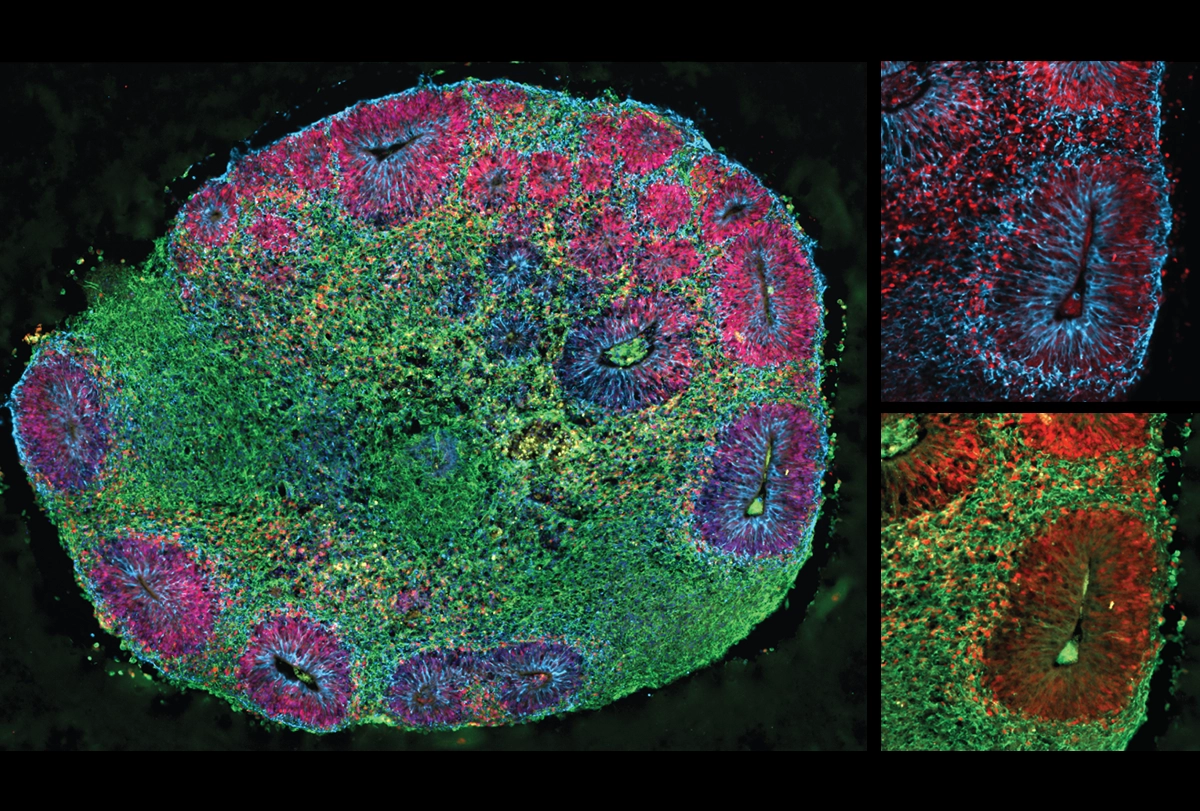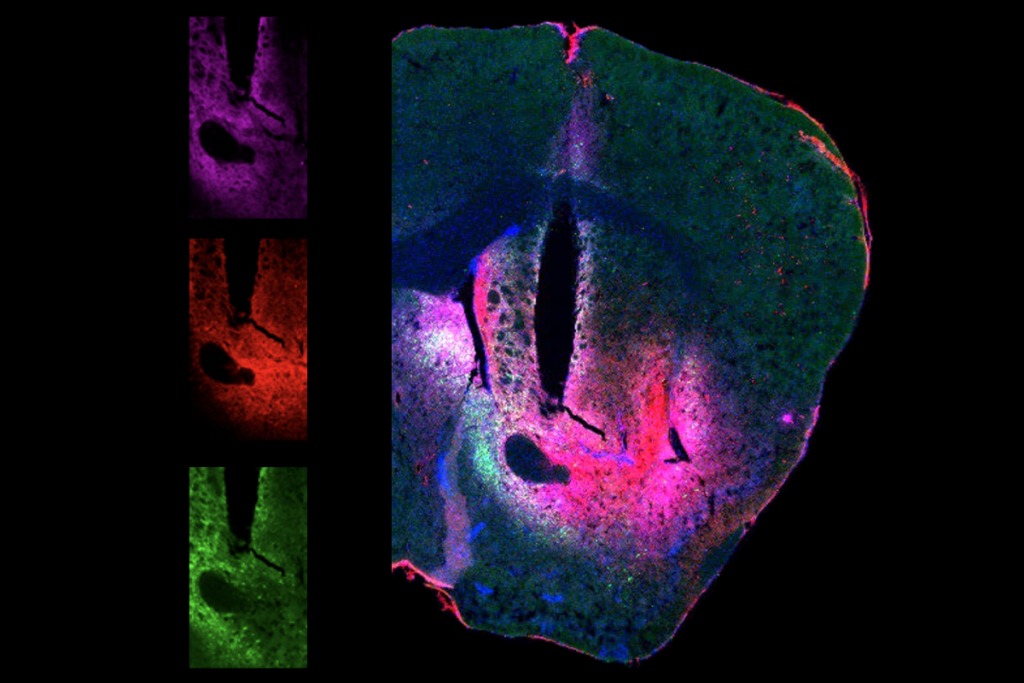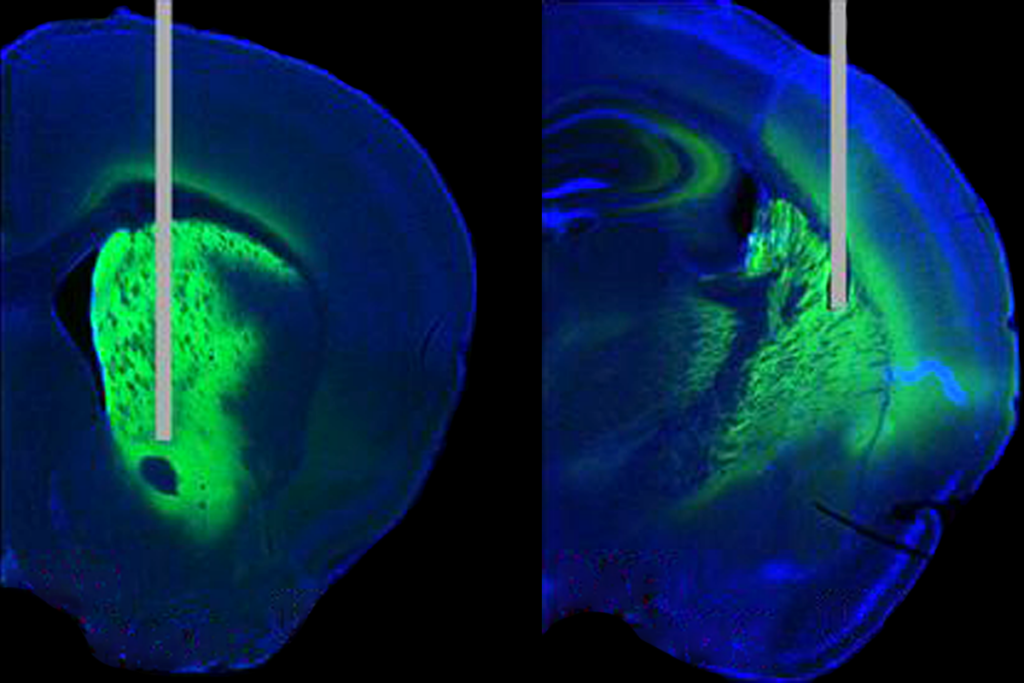Chimeroids—brain organoids grown from the cells of multiple people—offer scientists a novel way to compare individual differences in response to drugs, infections or pathogenic variants, according to a new study in Nature.
“The possibilities are endless,” says lead investigator Paola Arlotta, professor and chair of stem cell and regenerative biology at Harvard University.
The approach overcomes a longstanding issue that has plagued any comparison of organoids derived from different people: Disparities between the organoids might reflect genetic dissimilarities between individual people but could also result just from inadvertent variations in how each organoid was grown, says Aparna Bhaduri, assistant professor of biological chemistry at the University of California, Los Angeles, who did not contribute to the new study.
Mixing cells from multiple donors into a single organoid makes it possible to grow all the cells under the same conditions and makes it more likely that any differences seen between the cells are rooted in genetic variations between the people, Bhaduri says.
Initially, Arlotta’s team tried to produce chimeroids by mixing pluripotent stem cells from multiple donors. But one person’s cells usually outgrew the others to make up most of each organoid. Even small differences in the stem cells’ extremely high growth rates easily led one person’s cells to overshadow the others, the team noted.
So instead, the researchers grew the stem cells independently in organoids until they began to proliferate more slowly as neural stem cells or neural progenitor cells. They then broke these organoids apart and mixed them together, producing the chimeroids that developed with balanced numbers of up to five donors’ cells. Each cell line in the chimeroids could produce all the cell types normally found in the cerebral cortex, Arlotta and her colleagues discovered using DNA and RNA sequencing techniques.
The discovery that cells can survive the breakup and recombination of their organoids means that cells deep within organoids may prove experimentally targetable, Bhaduri says. “The centers of organoids are not always easy to reach with reagents that can act upon the cells there, so these findings reveal that all the cells making up organoids can be addressed,” she explains.
A
rlotta’s team treated the chimeroids with ethanol or the epilepsy drug valproic acid, both of which can cause neurodevelopmental conditions in children exposed to them in utero. Both compounds triggered changes in genetic activity that varied across cell donors, the team found. These findings demonstrate that variation between people is a significant source of their susceptibility to environmental influences.“This new model provides an ideal platform for comparing neurodevelopmental differences among individuals, potentially identifying high-risk donors for disorders by investigating responses to perturbations,” says Tomoyo Sawada, a research scientist at the Lieber Institute for Brain Development, who was not involved in this research.
Another exciting possibility for chimeroids is mixing cell types that would not normally coexist in the same organoid, yet do so in vivo, Arlotta says. For instance, the cerebral cortex hosts excitatory neurons, inhibitory neurons and microglia, which derive from distinct populations of cells, she explains.
“Organoids could become pre-clinical trial ‘avatars’ providing information on the differential responses of the cells of the brain of each individual to begin to predict clinical outcomes,” Arlotta says.
Brain chimeroids may ultimately prove useful in modeling complex psychiatric conditions, such as autism and schizophrenia, which in most cases involve many gene variants instead of one. Understanding the effects all these variants might have on the brain “will require human models that can incorporate large numbers of individuals,” Arlotta says. “Chimeroids can effectively dramatically scale up the number of donors that can be studied.”
But scientists will have to look at more than five cell lines in parallel—”more like tens, or hundreds,” Bhaduri says. Scaling up may require innovative freezing techniques that can let researchers prepare many organoids and then combine them when they are all at the same stage of development, she notes.





